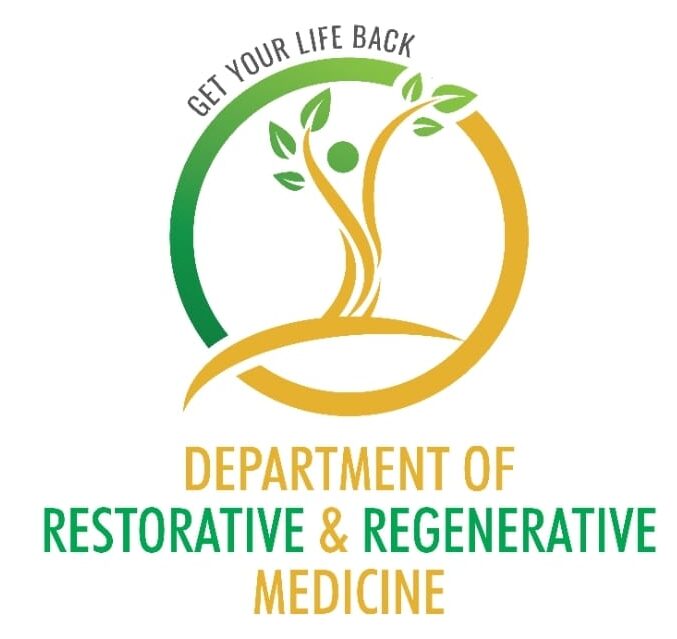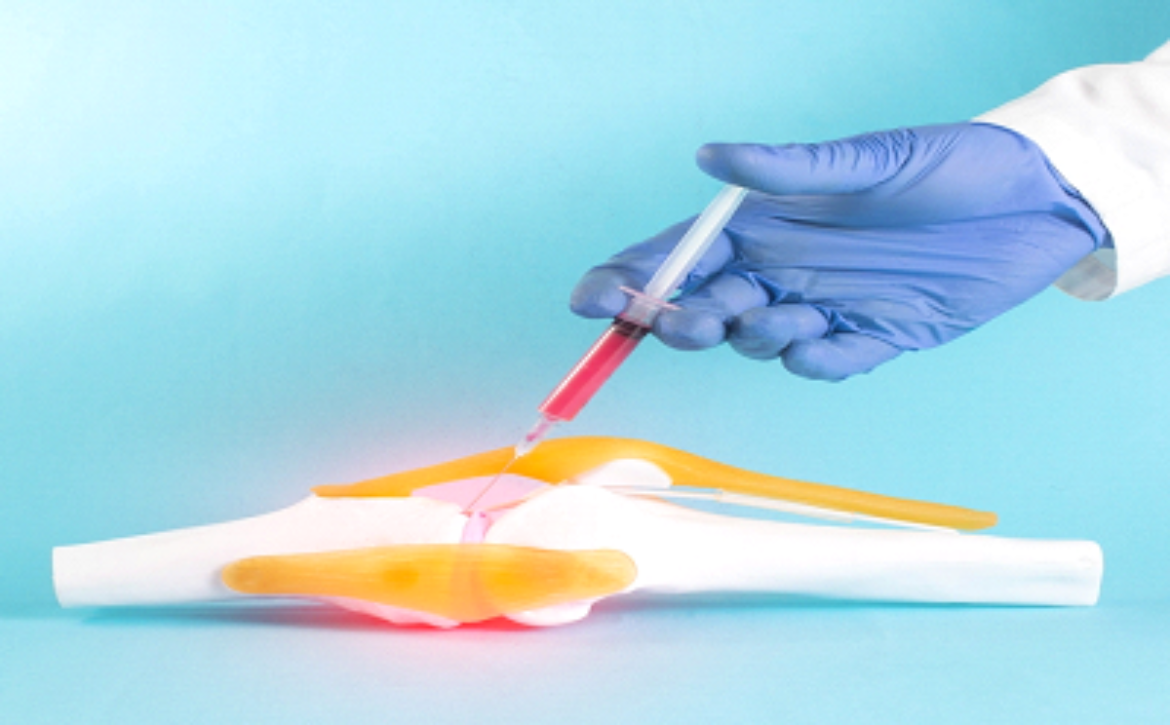Benefits of PRP Therapy for Knee Osteoarthritis
What Are The Benefits of PRP for joint health?
Platelet-Rich Plasma (PRP) therapy offers several potential benefits for joint health, making it an increasingly popular option for individuals dealing with joint-related issues. Some of the notable benefits of PRP for joint health include:
- Enhanced Tissue Repair
- Reduced Inflammation
- Pain Relief
- Improved Joint Function and Mobility
- Minimally Invasive Treatment
- Tailored and Personalized Approach
- Potential for Long-Term Joint Health
Explanation of Knee Osteoarthritis and its Symptoms
Knee osteoarthritis is a type of arthritis that affects the knee joint. It is characterized by the gradual breakdown of the cartilage that cushions the ends of the bones in the knee, leading to changes in the underlying bone and the formation of bone spurs. Osteoarthritis is the most common type of arthritis and commonly affects weight-bearing joints like the knees. Talking about the symptoms of Knee Osteoarthritis are :
- Pain
- Stiffness
- Swelling
- Limited Range of Motion
- Weakness and Instability
Who is Eligible to Benefit from PRP Injections?
PRP injections have shown potential benefits for a variety of individuals, including:
-
Athletes and Active Individuals:
PRP injections can aid in the healing of sports-related injuries such as tendonitis, muscle strains, and ligament sprains, helping athletes and active individuals return to their sport or exercise routines.
-
Individuals with Osteoarthritis:
PRP therapy benefits individuals experiencing joint pain and limitations due to osteoarthritis by potentially promoting tissue repair and reducing inflammation within the affected joint.
-
Those Recovering from Orthopedic Surgery:
PRP injections may be used as part of the post-surgical recovery process to support tissue healing and reduce recovery times in orthopedic surgeries.
Individuals with Tendon Injuries: One of the major benefits of prp injections is that is helps in healing of tendon injuries such as Achilles tendinopathy, tennis elbow, and rotator cuff injuries.
-
Chronic Pain Sufferers:
Individuals experiencing chronic pain as a result of musculoskeletal conditions may find relief through the regenerative potential of PRP injections.
-
People Seeking Minimally Invasive Treatment Options:
PRP injections offer a minimally invasive treatment approach, making them potentially suitable for those seeking alternatives to more invasive procedures.
If you are experiencing knee arthritis and are considering whether PRP injections can alleviate some of the symptoms, our team of platelet rich plasma doctor for knee in Mumbai at RNR Medicine Department, is available to offer guidance and assistance.
Let’s discuss this in more detail:
Understanding PRP Therapy

PRP therapy has been used in various medical fields, including sports medicine, orthopedics, dermatology, and dentistry, among others. It has gained popularity for its minimally invasive nature and potential benefits in promoting natural healing processes. Let’s discuss this in more detail:
What is PRP Therapy and How it Works?
Platelet rich plasma (PRP) is a substance that is made from your own blood and is used to help heal injuries. It contains special proteins that help your blood to clot and support cell growth. Doctors use a machine called a centrifuge to separate the plasma from your blood and then inject it into the injured area. This can help your body grow new, healthy cells and heal faster. PRP has been used by famous athletes to treat injuries like hair loss, tendon injuries, and acute sports injuries.
How PRP Therapy Works:
- Growth Factors and Healing: Platelets contain a high concentration of growth factors and proteins that play a crucial role in the body’s natural healing process. When injected into an injured or damaged area, PRP is believed to promote tissue repair and regeneration.
- Anti-Inflammatory Effects: PRP is thought to have anti-inflammatory properties, which can help reduce inflammation in the targeted area, potentially aiding in the management of conditions such as arthritis, tendonitis, and ligament injuries.
- Tissue Regeneration: The growth factors in PRP may contribute to the formation of new, healthier tissues, such as cartilage, in joints affected by degenerative conditions like osteoarthritis.
- Enhanced Healing Response: By providing a concentrated dose of platelets and growth factors directly to the site of injury, PRP therapy aims to stimulate and accelerate the body’s natural healing response.
Process of Extracting and Preparing Platelet-rich Plasma
A small amount of the patient’s blood is extracted, usually from the arm, in a manner similar to a standard blood test. The blood sample is then placed in a centrifuge, a specialized machine that rapidly spins to separate the blood into its various components. This centrifugation process isolates and concentrates the platelets and growth factors, producing the PRP solution, which is then gathered for utilization.
Effectiveness and Considerations
- Clinical Evidence: While some studies have shown promising results in terms of pain reduction and functional improvement, the overall effectiveness of PRP injections for knee arthritis such as osteoarthritis is still a topic of ongoing research.
- Individual Variability: The response to PRP therapy can vary among individuals, and not everyone may experience significant benefits. Results may depend on the severity of osteoarthritis and the patient’s overall health.
- Potential benefit from PRP injections: PRP therapy is appealing due to its minimally invasive nature, reduced risk of adverse reactions, and potential for promoting tissue healing.
Benefits Of PRP Injections for Knee Osteoarthritis
Platelet-Rich Plasma (PRP) therapy has numerous potential advantages for those suffering from knee osteoarthritis. Some of the benefits of PRP injections for knee arthritis, specifically osteoarthritis, include:
Reduced Pain and Inflammation
One potential benefit from PRP injections is that it reduces pain associated with knee osteoarthritis. The concentrated growth factors and anti-inflammatory properties present in PRP have the potential to alleviate inflammation within the knee joint. By targeting the inflammatory processes contributing to pain, PRP therapy offers a natural and potentially effective approach to managing discomfort associated with osteoarthritis.
Improved Mobility and Function
People with knee osteoarthritis frequently face restrictions in their joint mobility and function. PRP therapy’s ability to regenerate tissue may help improve joint function and increase mobility in the long run. By stimulating tissue repair and regeneration, PRP therapy is designed to assist in restoring joint movement and functionality, providing optimism for those looking to regain mobility despite the difficulties of osteoarthritis.
Potential for Tissue Repair and Regeneration
One of the core PRP therapy benefits for knee osteoarthritis is its potential to stimulate tissue repair and regeneration within the affected joint. The growth factors and platelets present in PRP are believed to support the body’s natural healing mechanisms, aiding in the repair and regeneration of damaged tissues, including cartilage. This aspect makes PRP therapy an attractive option for individuals seeking to address the underlying degenerative changes associated with osteoarthritis.
Long-term Effectiveness
Platelet-rich plasma (PRP) therapy shows promise in effectively managing knee osteoarthritis in the long term. By addressing the root causes of joint degeneration, PRP therapy aims to provide lasting relief and enhance functionality. Although responses may differ among individuals, the regenerative properties of PRP therapy indicate that its benefits could go beyond short-term symptom relief, potentially leading to sustained improvement in joint health over an extended period.
Lower Risk of Side Effects
As an autologous treatment derived from the patient’s own blood, platelet rich plasma injections for knee osteoarthritis carries a lower risk of adverse reactions and side effects compared to some traditional treatments. The natural composition of PRP reduces the likelihood of immune system responses or rejection, enhancing its safety profile. This lower risk profile positions PRP therapy as an appealing option for individuals seeking a minimally invasive and well-tolerated approach to managing knee osteoarthritis.
As you have explored the potential benefits of injections for knee arthritis as osteoarthritis, it becomes evident that this innovative approach holds great promise for your journey towards improved joint health. From the alleviation of pain and inflammation to the prospect of experiencing enhanced mobility and tissue repair, PRP therapy offers a personalized and regenerative pathway to address the complexities of knee osteoarthritis. Embracing PRP therapy means embracing the possibility of a minimally invasive treatment with the potential for long-term effectiveness and a lower risk of adverse effects. Through the lens of ongoing research and advancements, PRP therapy emerges as an encouraging beacon of hope, signaling a transformative opportunity for you to actively engage in enhancing your joint health and overall well-being. With its regenerative potential and personalized focus, PRP therapy represents a compelling avenue for your aspirations towards a more mobile, pain-free, and vibrant future.


